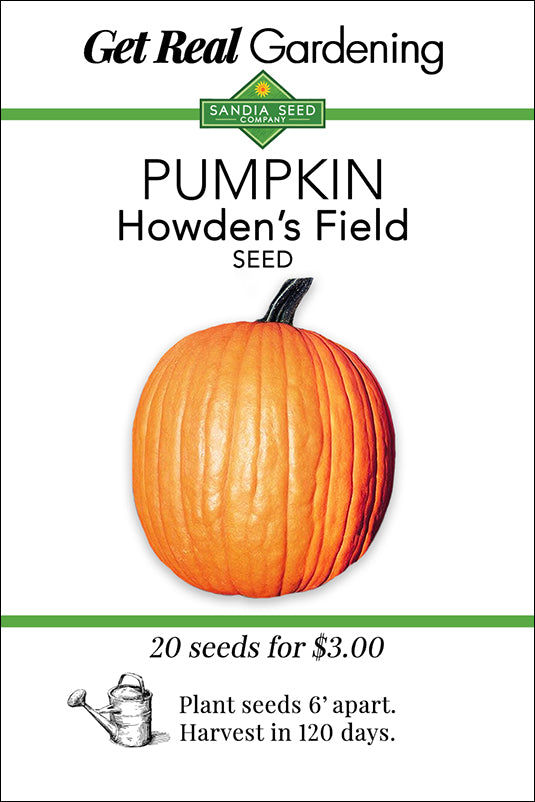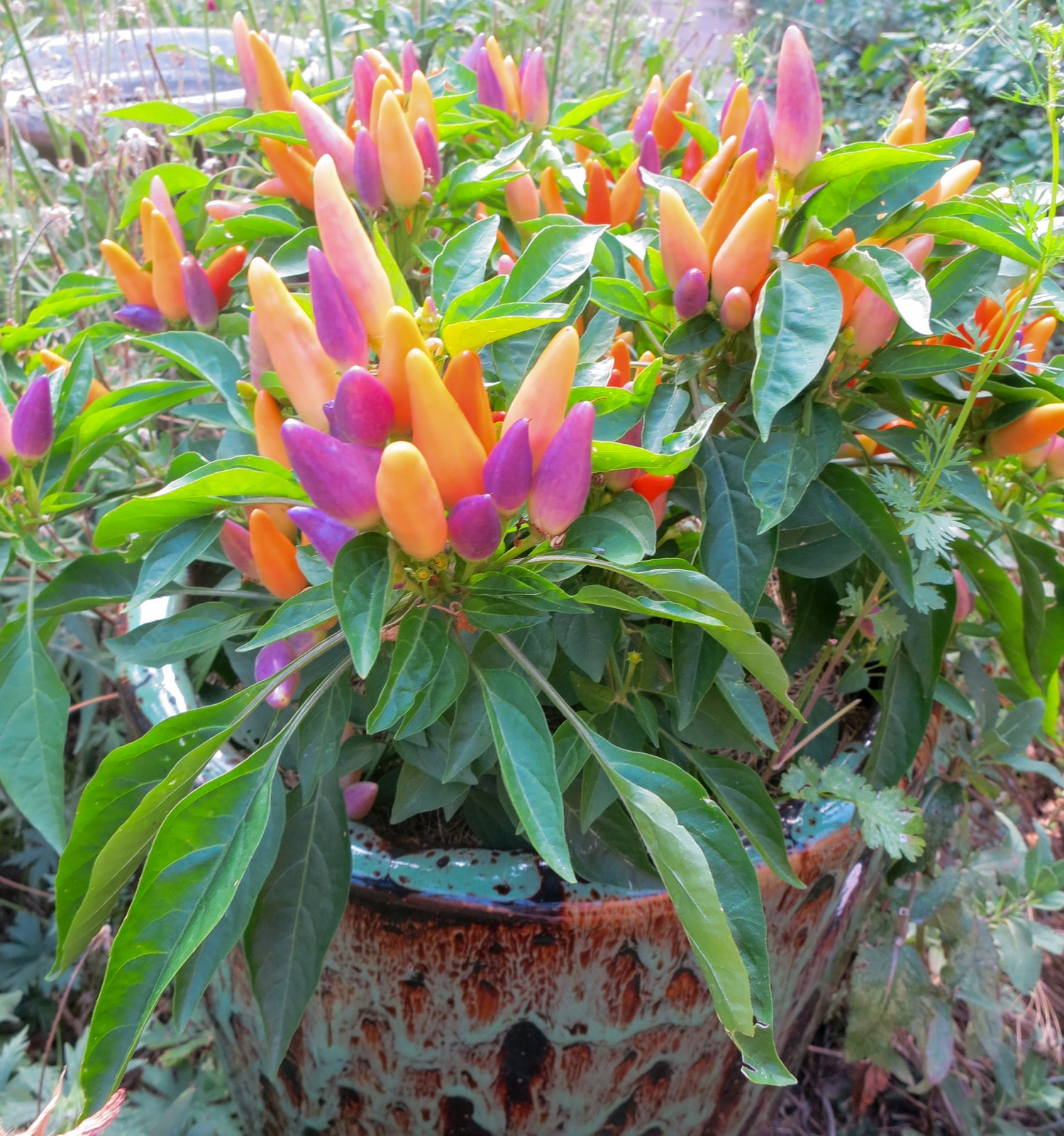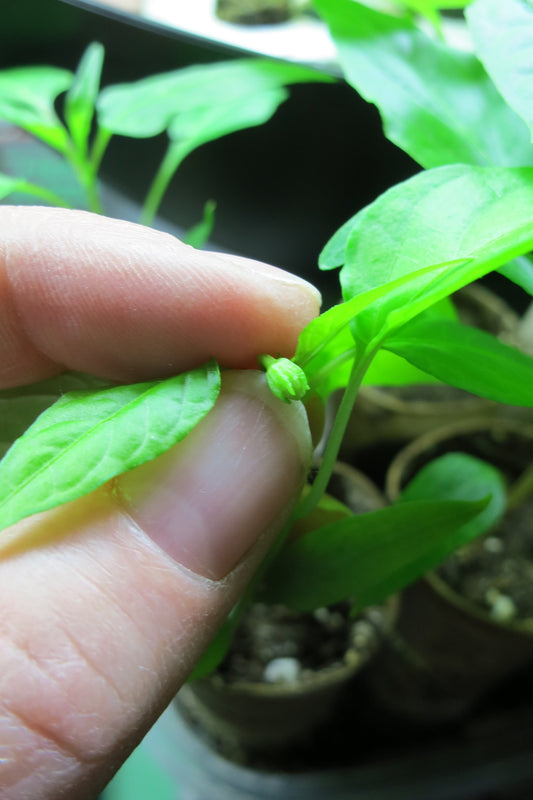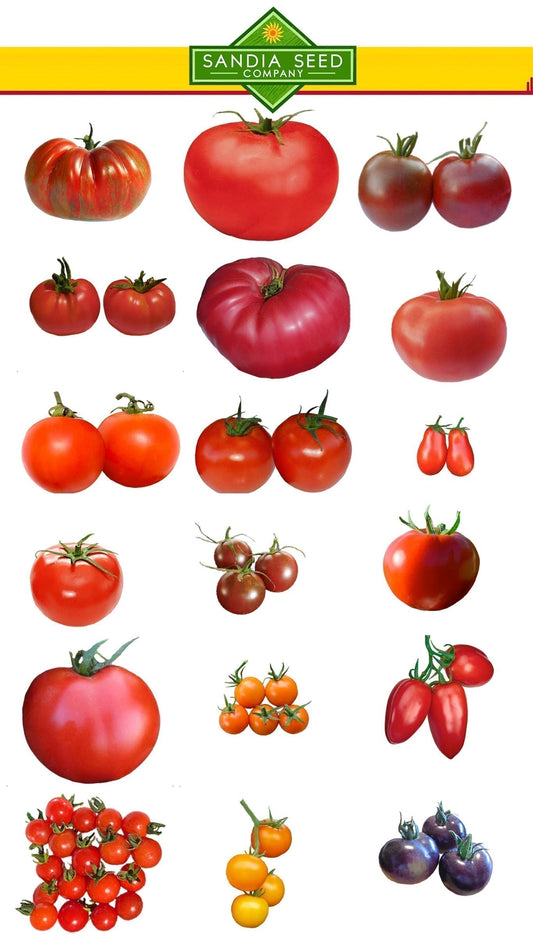


Green Chile Seeds
Sandia Seed specializes in seeds for the famous Hatch Green Chile, Poblano,...

Best Peppers for Containers
If you want to grow peppers in containers, below are our top favorite...


Sandia Seed Company
Couldn't load pickup availability
Howden's Field Pumpkin grows up to 25 lbs. Its sweet solid flesh is great for pies and its size is good for making jack'o lanterns.
Pumpkin seeds can be planted directly into the garden soil.
Sow seed directly into a raised mound of warm garden soil in late spring.
Plant seeds 2 seeds on top of each mound 1” deep. Mounds should be 6' apart. Thin to one plant per mound. They should come up in 7-10 days depending on the soil temperature and will grow quickly in warm weather.
Each packet contains 20 Howden's Field Pumpkin seeds. Cucurbita pepo. Annual. Open-pollinated, heirloom, Non-GMO. Harvest in 120 days. $3.00
This packet plants 10 mounds or a total of 10 plants.
This product is part of the Get Real Grow Food collection. Click here for more choices.
A true Jack-o'-lantern Pumpkin, Howden's Field Pumpkin is the industry standard for productive Pumpkin harvests. One terrific carving Pumpkin, it has long, productive vines and large, uniform fruits that grow up to 25 pounds. The fruits have attractive, deeply-ridged, resonant orange skin and wonderful dark green stem handles. Primarily a decorative Pumpkin, its baked flesh can also be used for pies and soups.
Features.
Pumpkin is a plump, nutritious orange vegetable, and a highly nutrient dense food. It is low in calories but rich in vitamins and minerals, all of which are also in its seeds, leaves, and juices. There are many ways to incorporate pumpkin into desserts, soups, salads, preserves, and even as a substitute for butter. The roasted seeds are delicious. It is very decorative with its bright orange skin.
Benefits.
Pumpkin has a range of fantastic benefits, including being one of the best-known sources of beta carotene. Just like their orange cousins, the carrot and the sweet potato. Beta carotene is a powerful antioxidant that gives orange vegetables and fruits their vibrant color. The body converts any ingested beta carotene into vitamin A. This helps your heart, lungs, kidneys, and other organs stay healthy.
Consuming foods with high volumes of beta carotene may have the following benefits of reducing the risk of developing certain types of cancer, offering protection against asthma and heart disease, decreasing the risk of age-related macular degeneration
More Information about planting, growing, and harvesting corn can be found in the Farmer's Almanac Growing Guide.



Got a few pumpkins last year off of these big vines, and we also enjoyed a lot of the squash blossoms stuffed with cheese and pan fried. Yum!!

Are you thinking about topping your chilli plants? Wondering when to top your pepper plants? Our answer: Keep it simple, we say don't worry about topping your plants at all!...
Are you thinking about topping your chilli plants? Wondering when to top your pepper plants? Our answer: Keep it simple, we say don't worry about topping your plants at all!...

The best tomatoes for salsa include a wide range of tomato varieties. Don't limit yourself to just one kind of tomato for your salsa! Often, fresh chopped tomato salsas like...
The best tomatoes for salsa include a wide range of tomato varieties. Don't limit yourself to just one kind of tomato for your salsa! Often, fresh chopped tomato salsas like...

Sandia Seed specializes in Red Pepper Seeds – ranging from Super Hot Peppers like the hottest pepper in the world, the Carolina Reaper... to deliciously Sweet Peppers such as Pimento Seeds, or the...
Sandia Seed specializes in Red Pepper Seeds – ranging from Super Hot Peppers like the hottest pepper in the world, the Carolina Reaper... to deliciously Sweet Peppers such as Pimento Seeds, or the...

Sandia Seed specializes in seeds for the famous Hatch Green Chile, Poblano,...

If you want to grow peppers in containers, below are our top favorite...
Germination for nearly all of my varieties was 3-5 days (95% - 100% success rate). My varieties include: Red Ghost, Carolina Reaper, Trinidad Scorpion, Devils Tongue, Cayenne Ring of Fire, Habenero Red, Yellow Jamaican, Paprika Numex, and Bolivian Rainbow. Another thing that I really appreciated is that each packet seemed to contain 20% more seeds than indicated (each 10 seed pack contained 12 seeds) - Not sure if that is standard but it was a nice bonus.
One of the best cherry tomatoes you'll ever eat!
I've found that when you combine roasted carrots, habaneros, lime juice and garlic, it will make the best hot sauce of your life. I think it's the sweetness and depth of the carrots that make the sauce even better, and pairs perfectly with the habanero heat. I got the inspiration from one of my favorite store-bought hot sauces, Marie Sharp's Habanero hot sauce. Sometimes I add some of your Chef's orange tomatoes too to make more of it, and they also give more flavor to the hot sauce and help tame the heat a bit. I grow these in my garden every year along with your orange habaneros, orange tomatoes and other hot peppers and veggies. Very reliable.
These fabulous peppers added lots of color to our patio pots. So pretty in multiple colors, plus you can pick them and add to salsa for a nice spicy kick. These are fun in any ornamental edible garden.
We let these hang dry, then ground them up – they made the tastiest pepper flakes. They have a nice kick, but good flavor too. Easy to grow plants, pretty peppers.
Great seeds, good germination, plants grow quickly and produce lots of pods for roasting. Great flavor and just the right amount of spice. We grow these every year in our garden in Utah.
These are so beautiful, tasty, and meaty. They make a great pico-de-gallo!
These were so big, one tomato can make a nice big bowl of salsa. They do have amazing flavor and color.
These were so tasty and very productive. Great for salsa.
I tried these purple Cherokee seeds on 2024. This is the first time growing these purple Cherokees and were amazed at the ease of germination and taste
These germinated in two days. I started them in midsummer and they fruited by late fall in my zone 10b garden and are overwintering just fine. I’ll have more to harvest by late spring. I made my red sauce for pozole for Christmas with my harvest!
Big Chiles with just enough heat to add to green enchilada's. The flavor after roasting is fantastic. Since green chile roasting is not a local thing in Eastern Washington we us a weed burner. The smell of roasting peppers is heavenly.
My favorite green chili to grow. Plenty of heat and after roasting sit perfectly on a hamburger. Also my wonderful wife makes Puelo Chili jam that is a real crowd pleaser
I was looking for a spicier New Mexico red chile and this was awesome! It is a beautiful looking pepper and the taste is superb.
Very productive plants even up here in New England!
Get our emails to hear about new seeds, growing tips, discount codes & contests:

